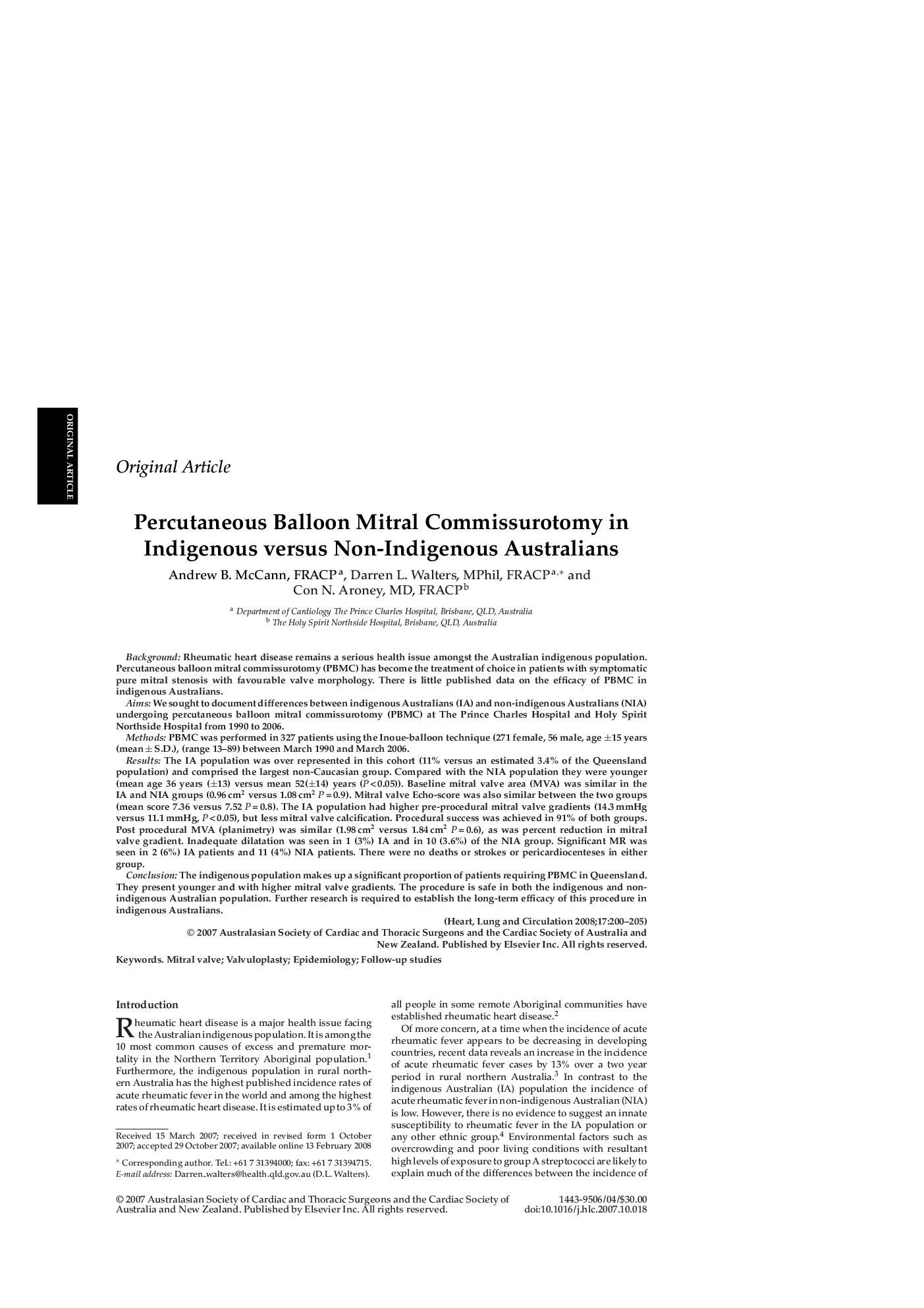| Article ID | Journal | Published Year | Pages | File Type |
|---|---|---|---|---|
| 2921380 | Heart, Lung and Circulation | 2008 | 6 Pages |
BackgroundRheumatic heart disease remains a serious health issue amongst the Australian indigenous population. Percutaneous balloon mitral commissurotomy (PBMC) has become the treatment of choice in patients with symptomatic pure mitral stenosis with favourable valve morphology. There is little published data on the efficacy of PBMC in indigenous Australians.AimsWe sought to document differences between indigenous Australians (IA) and non-indigenous Australians (NIA) undergoing percutaneous balloon mitral commissurotomy (PBMC) at The Prince Charles Hospital and Holy Spirit Northside Hospital from 1990 to 2006.MethodsPBMC was performed in 327 patients using the Inoue-balloon technique (271 female, 56 male, age ±15 years (mean ± S.D.), (range 13–89) between March 1990 and March 2006.ResultsThe IA population was over represented in this cohort (11% versus an estimated 3.4% of the Queensland population) and comprised the largest non-Caucasian group. Compared with the NIA population they were younger (mean age 36 years (±13) versus mean 52(±14) years (P < 0.05)). Baseline mitral valve area (MVA) was similar in the IA and NIA groups (0.96 cm2 versus 1.08 cm2P = 0.9). Mitral valve Echo-score was also similar between the two groups (mean score 7.36 versus 7.52 P = 0.8). The IA population had higher pre-procedural mitral valve gradients (14.3 mmHg versus 11.1 mmHg, P < 0.05), but less mitral valve calcification. Procedural success was achieved in 91% of both groups. Post procedural MVA (planimetry) was similar (1.98 cm2 versus 1.84 cm2P = 0.6), as was percent reduction in mitral valve gradient. Inadequate dilatation was seen in 1 (3%) IA and in 10 (3.6%) of the NIA group. Significant MR was seen in 2 (6%) IA patients and 11 (4%) NIA patients. There were no deaths or strokes or pericardiocenteses in either group.ConclusionThe indigenous population makes up a significant proportion of patients requiring PBMC in Queensland. They present younger and with higher mitral valve gradients. The procedure is safe in both the indigenous and non-indigenous Australian population. Further research is required to establish the long-term efficacy of this procedure in indigenous Australians.
